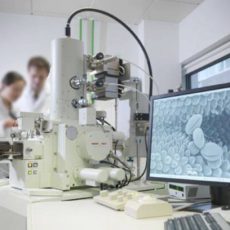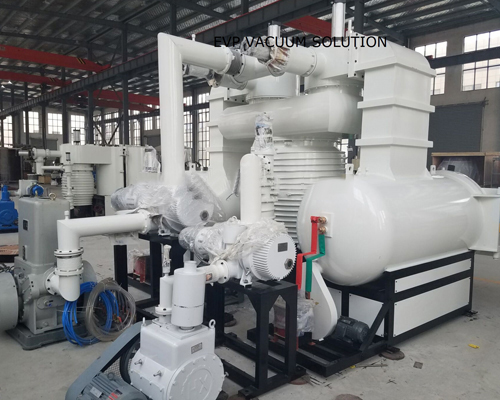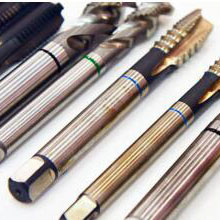Vacuum Pump in Chemical Vapor Deposition
Chemical Vapor Deposition (CVD) is a kind of chemical technology, which mainly uses one or several vapour phase compounds or elements containing thin films to react on the substrate surface to generate thin films. CVD is a new technique for preparing inorganic materials developed in recent decades. CVD has been widely used in purifying materials, developing new crystals, and deposition of various inorganic thin films in single crystal, polycrystalline or glassy state.These materials may be oxides, sulfides, nitrides, carbides, or binary or multivariate interelemental compounds of the III-V, II-IV, or IV-VI groups, and their physical functions can be precisely controlled by a vapor-doped deposition process. CVD has become a new field in inorganic synthetic chemistry.

Modern science and technology need to use a large number of new inorganic materials with different functions, these functional materials must be high purity, or in the high purity material is deliberately mixed with some impurity to form the doping material. However, many preparation methods we are familiar with in the past, such as high temperature melting, precipitation and crystallization in aqueous solution, are often difficult to meet these requirements, and it is difficult to guarantee high purity products. Therefore, the synthesis of new inorganic materials has become a major subject in modern materials science.
CVD is a process that uses gaseous substances to produce chemical reactions and transport reactions on solids and produce solid sediments. It roughly includes three steps:
1. Formation of volatile substances
2. Transfer the above materials to the sedimentary area
3. A chemical reaction takes place on a solid and produces a solid substance
The most basic chemical vapor deposition reactions include thermal decomposition reaction, chemical synthesis reaction and chemical transport reaction.
Feature
1. At moderate or high temperatures, solid material is deposited on the matrix through the gas phase chemical reaction between the initial compounds in the gaseous state.
2. The use of plasma and laser-assisted technology can significantly promote chemical reactions, allowing deposition to take place at lower temperatures.
3. The chemical composition of the coating can be changed with the change of the gas phase composition to obtain gradient deposits or mixed coatings.
4. The density and purity of the coating can be controlled.
5. Wrap the plating piece well.The film can be coated on complex shape matrix and granular materials.Suitable for coating various complex shapes of the workpiece. Because of its good coating performance, it can be coated with grooves, trenches, holes, or even blind holes of the workpiece.
6. Sedimentary layers usually have a columnar crystalline structure and are not resistant to bending, but their structure can be improved by various techniques for gas phase perturbation of chemical reactions.
7. A variety of metal, alloy, ceramic and compound coatings can be formed through various reactions.

Chemical vapor deposition is used in material preparation
1. Production of crystal and crystal thin film by chemical vapor deposition
Chemical vapor deposition can not only help to improve the properties of crystals or crystal films, but also produce many crystals which cannot be prepared by other means.The most common use of chemical vapor deposition is to create a new epitaxial single crystal layer on a crystal substrate, initially for silicon and later for semiconductor layers of epitaxial compounds.It is also more common in the preparation of metal single crystal film (such as the preparation of W, Mo, Pt, Ir, etc.) and individual compound single crystal film (such as nickel ferrite film, yttrium iron garnet film, cobalt ferrite film, etc.).
2.Production of whiskers
Whisker is a kind of developed single crystal, which plays a very important role in the category of materials and can be used to produce some new composite materials. CVD uses the hydrogen-reducing properties of metal halides to produce whiskers. CVD can not only produce all kinds of metal whiskers, but also produce compound whiskers, such as alumina, emery, titanium carbide whiskers and so on.
In general, CVD can be performed under normal pressure and vacuum conditions, i.e. negative pressure conditions. The quality of the film is better under vacuum deposition.
In order to obtain better material quality, EVP Vacuum Solution provides complete vacuum products, with the corresponding system in the chemical vapor deposition, the common vacuum pump are:
1.FB Turbo Molecular pump, the ultimate vacuum is from 10-6Pa to 10-8Pa, and the capacity is 8m3/h-300m3/h.
2.2XZ-C double stage vacuum pump, the ultimate vacuum is 1pa, and the gas volume is 2L/s-53L/s
3.EVP dry scroll vacuum pump, the ultimate vacuum is 1-3pa, and the gas volume is 4L/s-16L/s
If you have any questions, please feel free to contact us and look forward to your consultation.
Copyright: EVP Vacuum Solutions
(The article comes from the Internet. If reprinting is not allowed, please contact our company to delete it.)






